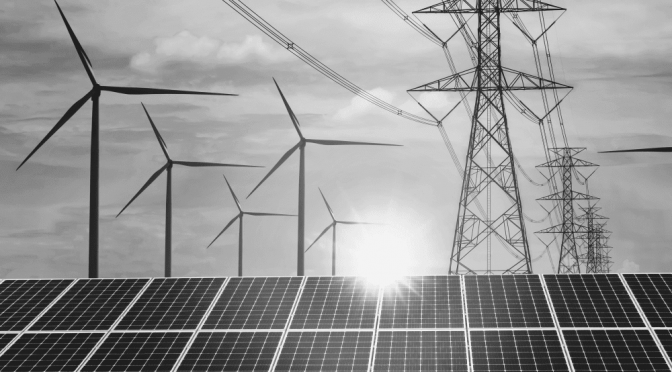Renewable energy has the full potential to power the world’s energy demands but can only be achieved through urgent improvements in grid infrastructure and integrated planning, REN21 report shows.
Paris, France — In 2023, renewable energy hit a record-breaking high, accounting for 30% of global electricity, with solar and wind contributing to 13% of the total. However, simply increasing the share of renewables is not enough to shift the energy system away from fossil fuels. REN21’s latest report highlights the urgent need for improvements in grid distribution, energy storage, and system flexibility to handle the variability of wind and solar power. These upgrades are essential to fully unlock the potential of renewable energy.
Key findings from REN21’s latest Renewables 2024 Global Status Report module, Renewable Energy Systems and Infrastructure, highlight recent trends and developments in policies, deployment, and technological advances related to electricity grids, energy storage, and sector coupling. These advances are vital for expanding the use of renewables in key demanding sectors like heating and transportation.
Global grid investment reached USD 310 billion in 2023—a 5% rise—but remains only half of the annual amount needed. However, a renewables-based energy system is already achievable, as demonstrated by countries like Denmark and Lithuania, which are integrating 100% renewable electricity into their grids.
Renewable energy has the potential to fuel our world completely. Renewable electricity will play an increasingly important role in the energy transition. In a renewables-based energy system; electricity grids, storage, and sector coupling are essential building blocks to provide a secure and resilient energy supply and integrate variable renewables like solar PV and wind into the grid.
While expanding renewable energy generation is crucial, REN21 emphasizes that it alone is not enough to transition to a fully renewable energy system. It is necessary to include transmission and distribution infrastructure, storage, flexibility solutions, and all end-use sectors in energy planning.
Latest market trends
By the end of 2022, 1.5 TW of renewable energy projects were delayed due to grid connection issues, while many regions saw renewable generation curtailed due to
capacity constraints. Growing electricity demand continues to strain an already overburdened system. Energy storage is also crucial to the stability of grids integrating high shares of variable renewables. Utility-scale battery storage grew by 120%, now totaling 55.7 GW globally.
“Grids are the backbone of our electricity systems, yet they often go unnoticed. Strategic investments in grid optimisation and expansion, regional interconnections, flexibility solutions like demand-side management and energy storage will be the foundation of a resilient, renewable energy future,” said Rana Adib, Executive Director of REN21.
“Through political will, integrated, cross-sectoral planning, and increased investment, we can achieve a world powered entirely by renewable energy,” Adib added.
Grids with high shares of renewables are already a reality
100% renewable electricity in grids is already happening, combining high shares of variable renewable electricity (namely solar and wind power) with dispatchable renewables such as hydropower, geothermal, and biopower.
The report highlights twelve countries that are already integrating a yearly average of more than 30% of variable renewables into their electricity grids.
Notably, Denmark leads with 67% of its gross electricity from variable renewables, followed by Lithuania with 58%, and three other countries that achieved shares above 40%: Greece, the Netherlands, and Spain. Australia, Chile, Germany, Ireland, Portugal, Uruguay and the United Kingdom have also incorporated high shares of variable renewables generation.
Of these twelve countries, eight have also reached above 85% of maximum daily renewables penetration in their power grids (from all renewable energy sources), three of them reaching more than 100%: Denmark, Portugal, and Germany.
The importance of integrated planning To avoid bottlenecks in renewable energy deployment, integrated planning across power generation, transmission and distribution, storage, and consumption is imperative. Coupling the power sector with transport, heating, and hydrogen production will create a more resilient and efficient energy system.
The report shows that our current transmission and distribution grids were developed alongside traditional centralised power generation facilities. They need to be adapted to incorporate increasingly decentralised and variable renewable power resources, and to enable demand-side management, in the context of increasing electricity demand.
The future of energy systems lies in reinforcing these grids to unlock the full potential of renewables through grid optimisation and expansion, storage solutions, demand-side management, increasing interconnectivity, and coupling the power sector with other end-use sectors like transport and heating.
“Integrated planning is fundamental to building optimised energy systems and infrastructure, but it is also a way to minimise investments, the use of resources, and the environmental footprint of infrastructure. Such an approach is key to ensure societal support of infrastructure development,” said Adib.
Leading up to COP29
To ensure a successful transition to renewable energy, integrated planning across energy demand, supply, and infrastructure is critical. Immediate investment and policy alignment are needed to scale up infrastructure such as grids and storage, as well as sector coupling to accommodate the growing demand for electricity and the integration of renewable energy sources.
“High shares of renewables in electricity grids are possible. It no longer needs to be proven, and there is no excuse for governments not to move to an energy system that builds on renewables. At COP28, governments committed to tripling renewable energy capacity by 2030. At COP29, they must show the same ambition for enabling infrastructures. The update of the Nationally Determined Contributions is the opportunity to ensure integrated energy and infrastructure planning is anchored in national plans,” said Adib.


